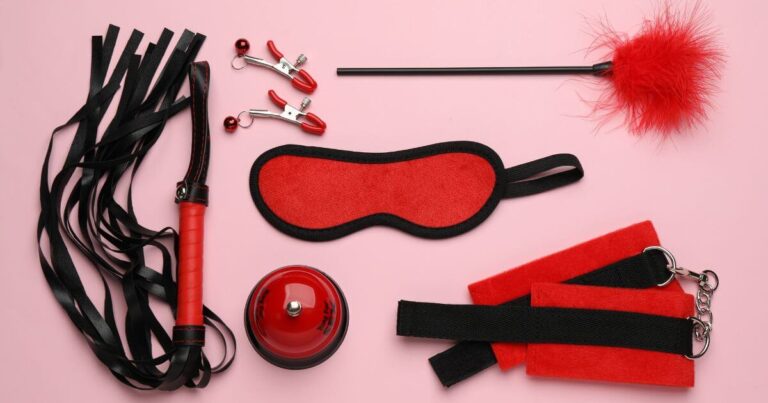Venturing into the world of BDSM is an exciting journey, but reliable BDSM education is essential to ensure safety, consent, and enjoyment. The internet is filled with conflicting advice, and while there are many excellent educators, there are also plenty of misleading or outright dangerous sources.
How can you tell the difference?
In this guide, we’ll explore why quality BDSM education matters, how to evaluate sources, and where to find the best educational materials to build a solid, informed foundation for your kink journey.
Why Reliable BDSM Education Matters
BDSM involves complex dynamics, risk awareness, and precise communication. Without proper education, misunderstandings or unsafe practices can lead to harm. Learning from trustworthy sources helps you:
- Understand the fundamentals of negotiation, boundaries, and power exchange.
- Minimize risks with essential safety knowledge for bondage, impact, sensation, and psychological play.
- Challenge harmful misconceptions that can lead to unsafe or unethical BDSM practices.
- Foster healthy relationships by developing strong communication skills for consensual experiences.
Whether you are a submissive, Dominant, or switch, investing in proper BDSM education is crucial for your growth and safety.
How to Identify Trustworthy BDSM Educational Sources
Not all BDSM education is created equal. Here are key factors to evaluate when determining whether a source is credible, ethical, and valuable.
1. Expertise and Experience
Look for educators with established credibility in the BDSM community. Consider:
- Years of experience in BDSM education or practice.
- Professional credentials in sex education, kink-aware therapy, or coaching.
- Contributions such as books, workshops, or collaborations with reputable BDSM organizations.
- Recognition within the community as ethical, knowledgeable, and consent-focused.
A well-respected educator will have a documented history of contributions and be recognized by their peers.
2. Community Recommendations
The BDSM community values word-of-mouth recommendations. To find reliable educators:
- Join local or online BDSM groups to see which resources are frequently recommended.
- Attend munches or community events where experienced players can suggest vetted educators.
- Read reviews on BDSM books, courses, or workshops before committing.
If a source is well-regarded by the BDSM community, it is more likely to be credible.
3. Consent-Focused and Inclusive Content
Trustworthy BDSM education prioritizes ethics, safety, and consent. The best sources:
- Emphasize risk awareness and safety protocols such as RACK (Risk-Aware Consensual Kink) and SSC (Safe, Sane, Consensual).
- Address the importance of aftercare, clear communication, and mental health.
- Are inclusive of diverse identities, including all genders, sexual orientations, and neurodiverse perspectives.
If a source dismisses consent, mocks boundaries, or promotes a “one true way” of BDSM, it should be avoided.
Best Sources for BDSM Education
1. Books and eBooks
Books by respected educators offer in-depth, structured learning. Some highly recommended titles include:
- The New Topping Book & The New Bottoming Book – Dossie Easton & Janet Hardy
- Playing Well With Others – Mollena Williams & Lee Harrington
- SM 101: A Realistic Introduction – Jay Wiseman
- Edge Play: A Guide to Risky Kink – Dr. Gloria Brame
Books provide a foundational understanding and can be revisited as knowledge deepens.
2. Websites and Online Forums
Websites offer ongoing discussions, educational articles, and insights from experienced practitioners. Some valuable sites include:
- The National Coalition for Sexual Freedom (NCSF) – Offers resources on BDSM rights, legal protections, and consent guidelines.
- FetLife – A BDSM social network with discussion groups and community insights (content should be cross-referenced).
- Scarleteen – Provides accessible BDSM education with a focus on ethics and consent.
Reputable websites provide educational articles and discussion forums where experienced players share insights.
3. Workshops and In-Person Classes
Many sex-positive shops, kink conferences, and community centers host BDSM education events. Consider:
- Sex-positive stores like The Pleasure Chest or Babeland – Often host BDSM classes with experienced educators.
- Local dungeon workshops – Many community dungeons offer hands-on learning opportunities.
Live classes provide interactive learning, safety demonstrations, and the ability to ask questions directly.
4. Podcasts and Video Channels
BDSM educators often share valuable insights through podcasts and YouTube. Some trusted sources include:
- Off the Cuffs Podcast – Covers kink, fetish, and BDSM education.
- The Dildorks – Discusses sex education, kink, and relationship dynamics.
- Evie Lupine (YouTube) – Offers detailed BDSM guides and discussions.
- Sunny Megatron (YouTube & Podcast) – Provides BDSM and sex education from an experienced kink educator.
When following podcasts or YouTube channels, ensure the creators have demonstrated experience rather than focusing solely on entertainment.
How to Evaluate Online BDSM Education
Online BDSM education can be valuable, but misinformation is common. To filter out unreliable sources, consider the following:
1. Check the Credentials of the Author
- Are they a respected educator, therapist, or community leader?
- Have they published articles, books, or led workshops?
- Do they cite sources and emphasize ethical practices?
2. Cross-Reference Information
- Does the advice match recommendations from other reputable educators?
- Is it widely accepted in the BDSM community?
- Does it align with best practices for safety and consent?
3. Ensure the Content Is Up-to-Date
- BDSM safety practices evolve over time.
- Older books and articles may contain outdated information or harmful myths.
- Look for sources that have been published or updated within the last 5-10 years.
A good BDSM educator should continue to adapt and refine their teachings based on the latest research and community discussions.
Conclusion – Empower Yourself with Knowledge
Investing in quality BDSM education is essential for ensuring a safe, ethical, and fulfilling kink journey. By seeking out trusted educators, reading vetted materials, and engaging with the community, you can build confidence, deepen your understanding, and play more safely.
Key Takeaways:
- Prioritize sources that emphasize consent, safety, and ethics.
- Look for educators with real experience and community recognition.
- Use books, online courses, workshops, and vetted podcasts for learning.
- Cross-check information to avoid misleading or dangerous advice.
Approach BDSM with curiosity, critical thinking, and a commitment to ongoing education—because knowledge is your greatest tool for safe and rewarding kink experiences.



